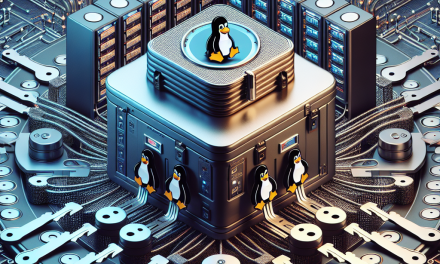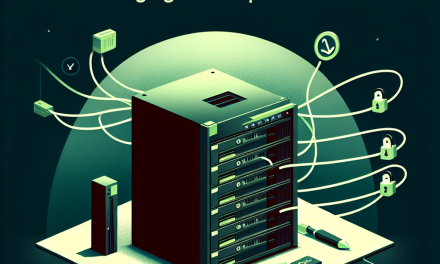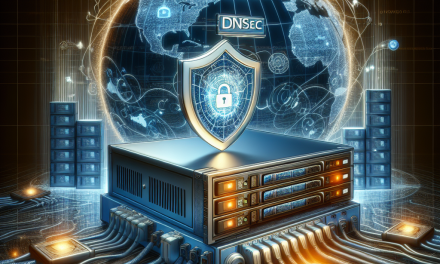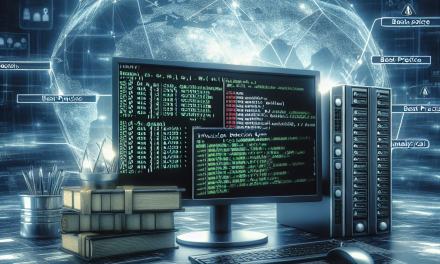As the adoption of Docker containers continues to soar in the tech landscape, ensuring the performance and reliability of these containers has become paramount. Proper monitoring is critical for maintaining optimal performance and diagnosing potential issues within your Docker infrastructure. In this article, we will explore the best practices for monitoring Docker containers on Linux servers, helping you make informed decisions to ensure your applications run smoothly.
Understanding the Importance of Docker Container Monitoring
Monitoring Docker containers is crucial for several reasons:
-
Resource Management: Containers share the same resources of the host system. Without proper monitoring, you may face resource contention issues, leading to degraded performance.
-
Performance Insights: Real-time metrics provide insights into application performance, allowing you to identify bottlenecks and optimize resource allocation.
-
Troubleshooting: Timely access to logs and performance data helps in diagnosing and resolving issues before they impact end-users.
-
Cost Efficiency: Monitoring helps in understanding and managing resource usage, potentially leading to cost savings, especially in a cloud environment where resources may incur costs based on usage.
- Security: Monitoring can also assist in detecting unauthorized access or potential security breaches by tracking unusual behavior in your containers.
Best Practices for Monitoring Docker Containers
Below are some best practices that can help ensure effective monitoring of your Docker containers on Linux servers:
1. Leverage Container Metrics
Docker provides a rich set of metrics that can be fetched using the docker stats command. This command gives you a real-time view of container resource usage, including CPU, memory, network traffic, and disk I/O. Automate the collection of these metrics using a monitoring tool.
2. Use Dedicated Monitoring Tools
Numerous monitoring tools can help you collect and visualize container metrics. Some popular options include:
- Prometheus and Grafana: Collects metrics from Docker and provides a powerful interface for visualization.
- cAdvisor: Monitors resource usage and performance characteristics of containers.
- ELK Stack (Elasticsearch, Logstash, Kibana): For monitoring logs, the ELK stack provides a powerful solution to aggregate and visualize Docker logs.
3. Monitor System-level Metrics
In addition to container metrics, it’s crucial to monitor system-level metrics. Track CPU, memory, disk I/O, and network usage of the host server. This can help identify if the host is becoming a bottleneck and impacting container performance.
4. Use Logging Drivers
Docker supports multiple logging drivers that allow you to route logs to different destinations. Using a dedicated logging driver (like "fluentd," "json-file," or "syslog") helps centralize log management, making it easier to monitor and troubleshoot applications running inside containers.
5. Set Up Alerts and Notifications
Implement alerting mechanisms to notify you about performance issues before they escalate. Tools like Prometheus Alertmanager, PagerDuty, and Opsgenie can help implement alert systems based on predefined thresholds. Make sure that alerts are actionable and provide context to facilitate swift resolution.
6. Analyze Container Performance Over Time
In addition to real-time monitoring, it’s important to analyze the historical performance of containers. Use tools like Grafana to create dashboards displaying trends and historical data. This information can be invaluable in capacity planning and understanding your containerized applications’ performance over time.
7. Optimize Resource Limits
Properly setting resource limits (CPU and memory) for your containers can help prevent a single container from consuming excessive resources. Use the --memory and --cpus flags when running containers to define these limits, and monitor the usage to adjust the limits as needed.
8. Review Docker Security Best Practices
Monitoring should also encompass security best practices. Utilize tools like Docker Bench Security to automate the process of checking Docker container setup against best practices. Monitoring user access logs and container behaviors can help detect potential security breaches.
9. Invest in Infrastructure Monitoring
Ensure that your underlying infrastructure (network, load balancers, databases) is also monitored. A holistic view of your systems can significantly improve your ability to resolve issues that might be affecting container performance.
10. Regularly Review and Update Your Monitoring Strategy
Technology evolves rapidly; make it a routine to review and update your monitoring practices. Learn from past incidents and improve your system based on this knowledge. Incorporating feedback and staying informed about new monitoring tools and techniques can drastically enhance the performance and reliability of your containered applications.
Conclusion
Monitoring Docker containers on Linux servers is an essential part of managing modern applications. By employing a combination of container metrics, dedicated monitoring tools, alerting mechanisms, and security practices, you can ensure the smooth operation of your containerized environments. Implementing these best practices will not only enhance performance but also minimize downtime, ultimately providing a better experience for your users.
For more insights into best practices in DevOps and containerization, visit the WafaTech Blog and stay ahead in the ever-evolving tech landscape!





